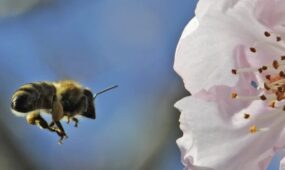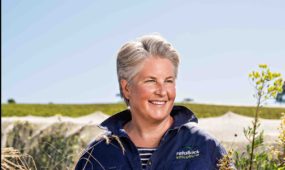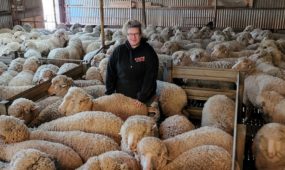New varieties aim to turn around Australia’s declining apricot industry
Primary Industries
The largest release of new apricot varieties in Australia’s history has been launched in a bid to revitalise the declining industry.

Sign up to receive notifications about new stories in this category.
Thank you for subscribing to story notifications.
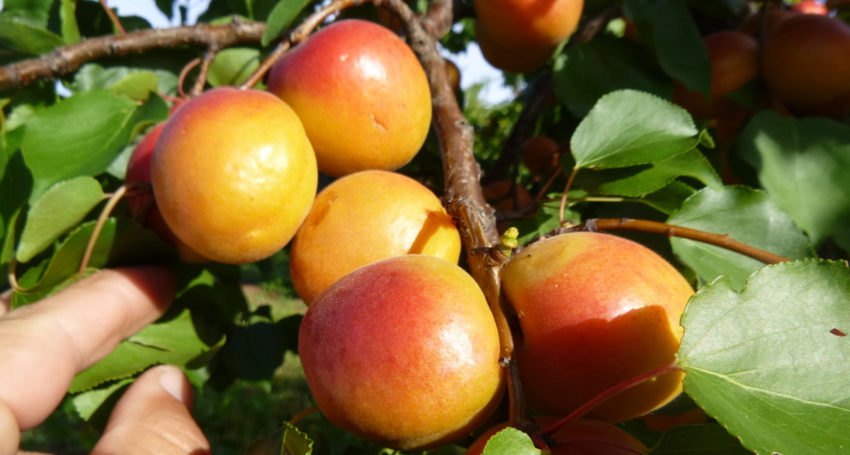
The South Australian Research and Development Institute (SARDI), which leads the National Apricot Breeding Program, this month released 17 new varieties of the stone fruit at field days in the state’s Riverland.
The new varieties feature higher sugar levels and yields to provide more reliable cropping and better returns particularly for the dried fruit market. However, the increased sugar levels are also delivering more intensely flavoured fresh apricots, which is hoped to help win back a greater share of the highly competitive snacking market.
Leader of SARDI’s Fruit Tree Breeding program Darren Graetz said the latest varieties were the culmination of 35 years of research and had delivered some of the highest quality apricots ever produced in Australia.
He said it presented growers with an opportunity to increase profit margins and access export markets with a premium product.
“Our breeding focus was to improve the fruit sugars to increase the profitability of drying but as a major component of flavours it can benefit both fresh and dried industries and I think we’ve got the products now to actually do that, we just need growers to recognise that and be brave enough to have a go,” Graetz said.
“There’s huge potential for both the fresh and dried industries to grow and I’d like to see them increase production and develop export markets.
“The increase in fruit sugars is the foundation of everything and it suits the Asian pallet – to be able to sell large volumes of fresh premium sweet apricots to Asia could be excellent and even dried fruit.”
Australia was a globally significant producer of apricots from the 1950s to the 1980s growing about 30,000 tonnes a year with the majority of them sourced from the Riverland.
Of this amount about 20 000t was used for drying and 5000t for canning and the rest sold mainly as fresh fruit.
According to industry body Horticulture Innovation Australia, apricot production in the year to June 2017 was just 7163t with 80 per cent of it sold as fresh produce. While South Australia accounted for about half of all apricot plantings and the majority of dried production until the 1980s, the market is now dominated by Victoria, which produced 58 per cent of Australia’s apricots in 2017 compared with South Australia’s 23 per cent and Tasmania’s 14 per cent.
Growers in South Australia’s Riverland region replaced apricots with wine grape plantings in the 1980s and ’90s and almond trees in more recent years.
The new varieties have been bred by SARDI at the Loxton Research Centre in conjunction with industry bodies including Australian Dried Tree Fruits Association, Summer Fruit SA and Horticulture Innovation Australia.
The 17 varieties include five FlavorCot varieties, nine RiverCot and three TastiCot varieties.
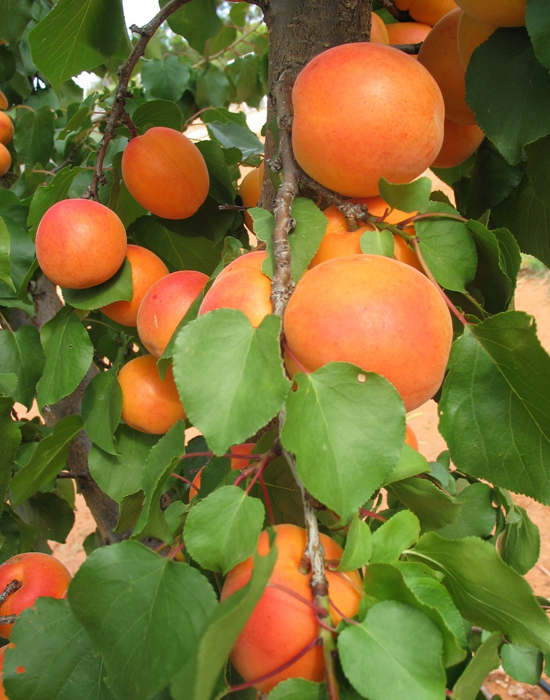
The apricot variety RiverCot9 is among 17 new varieties released in South Australia this month.
Graetz said the FlavorCots displayed complex fruity, floral and tropical flavours while the three TastiCot varieties had similar flavour profiles to current fresh market apricots but were much sweeter. He said the RiverCot apricots were full flavoured but were bred more with dried fruit in mind.
“The really cool thing about these varieties is that most of them are suitable for fresh and dried markets – out of the whole 17 there are only about three not suited to the fresh market,” he said.
Australian apricots are typically harvested in early summer, from mid-November to mid-January.
South Australia was previously known for its dried apricots and has suffered the biggest production declines. This culminated in the closure of Angas Park dried fruit factories in the Riverland and Barossa Valley in 2012 and 2013.
The closures and relocation of processing by parent company Sunbeam Foods to Mildura in Victoria were blamed on soft demand created by a flood of cheap imports.
The dried apricot market is now dominated by Turkey, the world’s largest apricot producer.
Graetz said the new SARDI varieties produced a dried apricot that was more fully flavoured and richly coloured than its Turkish competitor and was able to bridge the gap in sweetness level.
He said many fresh apricots in Australia in recent years had been grown from French and American varieties not suited to Australian conditions and although they presented well, they lacked flavour.
“Everyone used to know that apricots were a favourite but when they started to deliver a bit less of a consumer-focused quality product they suffered and lost shelf space to other snack products,” Graetz said.
“These new apricots can address it and generate some repeat business, there’s no doubt about that.
“The one big thing all of these varieties have in common is they are a massive lift in fruit sugars above what’s in the varieties they have to compete with.
“In the dried sense sugar levels are all about improving your dry ratio while on the fresh side of it fruit sugars are a major component of flavour.”
Australia is now a net importer of fresh and dried apricots. Some fresh apricots are exported, about 400 tonnes a year almost exclusively from Victoria, to markets in the Middle East and Asia.
Graetz said traditional drying varieties such as Story, Moorpark and Hunter yielded about a tonne of dried fruit for every six tonnes of fresh apricots picked. However, he said some of the new varieties required only 4.5 tonnes to produce a tonne of dried fruit because of the increased sugar level.
“So it’s a massive production lift for the same work and we would advocate plugging them into more modern production systems with closer planted trees kept to shorter heights to further improve overall efficiencies,” he said.
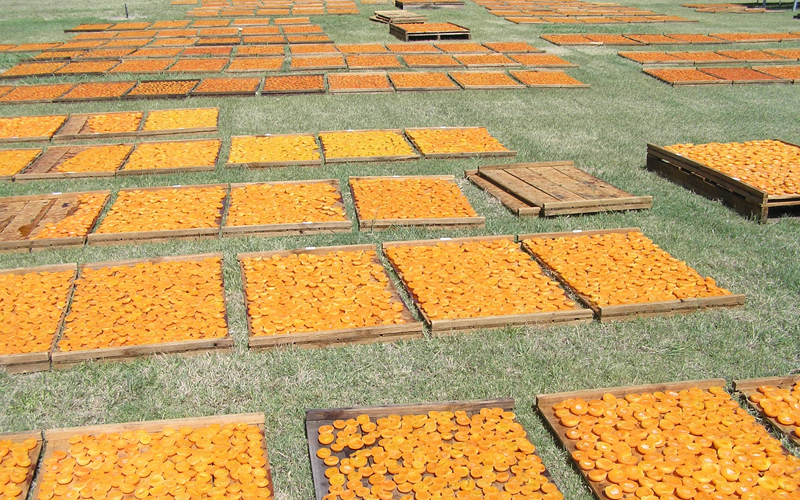
Apricots drying on trays in South Australia’s Riverland.
“Yields are very, very strong and it’s potentially possible we could see yields of 25 tonnes plus per hectare especially for some of the dried varieties.
“When you couple that with improvements in drying ratio you’re looking at grossing potentially of $55,000 a hectare off a crop that uses 6-7 megalitres of water a hectare, which makes apricots really suited to the environment and relatively water efficient when you consider almonds use an average of 14 megalitres a hectare.”
Riverland commercial stone fruit grower Jason Size has 30 years experience in the industry and trials up to 1000 different varieties of apricots, peaches, nectarines and cherries from around the world in his orchard at any one time.
Size has a commercial planting of a SARDI apricot variety he hopes to begin exporting to China for the first time when it is harvested in the coming months.
He said the new varieties he had trialled proved to be robust, versatile, grower friendly and represented an excellent opportunity to turnaround Australia’s apricot industry from long-term decline to growth.
“That’s the hope for the industry and we’d always encourage growers to look at new opportunities for growing in the Riverland and in other parts of Australia as well to try and get some more flavoursome apricots onto the market – hopefully it will lead to more apricot trees being planted,” Size said.
“The ball is in the growers’ court to get the trees, test them to see for themselves and then make a decision.”
The new varieties can be ordered through the licenced production nurseries Balhannah Nursery in the Adelaide Hills or Mossmont Nursery in Griffith, New South Wales. Further nursery licences are available. A signed Non-propagation agreement is required prior to tree delivery.
Jump to next article
